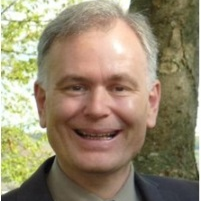Rivers - Connecting Mountains and Coasts
A special issue of Water (ISSN 2073-4441). This special issue belongs to the section "Hydrology".
Deadline for manuscript submissions: closed (31 March 2024) | Viewed by 13649
Special Issue Editors
Interests: sediment transport; river morphodynamics; ecohydraulics; river restoration; integrated flood risk management; sustainable hydropower
Special Issues, Collections and Topics in MDPI journals
Interests: fluvial hydraulics; numerical modelling; hydrodynamics; sediment transport; hydraulic engineering; ecohydraulics; river restoration
Special Issues, Collections and Topics in MDPI journals
2. Institute of Hydraulic Engineering and River Research, Department of Water-Atmosphere-Environment, BOKU – University of Natural Resources and Life Sciences, Muthgasse 107, 1190 Vienna, Austria
Interests: computer-aided simulation; geomorphology; hydraulics; hydrobiology
Special Issues, Collections and Topics in MDPI journals
Special Issue Information
Dear Colleagues,
Rivers serve as crucial connections between mountains and coasts, and the challenges in managing them are complex and multifaceted. Climate change is one of the biggest of these challenges, leading to changes in water availability, increased frequency of floods and droughts, and disruptions to ecosystem services. The increasing agricultural, industrial, and urban demand for water resources puts further strain on rivers, leading to over-extraction, pollution, and degradation. Conflicting interests between water consumers, such as farmers, hydroelectric power companies, and conservationists, make it difficult to find solutions that balance the needs of different stakeholders. Despite these challenges, there is currently no comprehensive assessment of the status of the world's large rivers. The research presented in this Special Issue is intended to shed light on global changes that have occurred in large rivers in recent decades, and to provide valuable insights into potential solutions for improved management of these vital water bodies.
Prof. Dr. Helmut Habersack
Dr. Michael Tritthart
Dr. Christoph Hauer
Guest Editors
Manuscript Submission Information
Manuscripts should be submitted online at www.mdpi.com by registering and logging in to this website. Once you are registered, click here to go to the submission form. Manuscripts can be submitted until the deadline. All submissions that pass pre-check are peer-reviewed. Accepted papers will be published continuously in the journal (as soon as accepted) and will be listed together on the special issue website. Research articles, review articles as well as short communications are invited. For planned papers, a title and short abstract (about 250 words) can be sent to the Editorial Office for assessment.
Submitted manuscripts should not have been published previously, nor be under consideration for publication elsewhere (except conference proceedings papers). All manuscripts are thoroughly refereed through a single-blind peer-review process. A guide for authors and other relevant information for submission of manuscripts is available on the Instructions for Authors page. Water is an international peer-reviewed open access semimonthly journal published by MDPI.
Please visit the Instructions for Authors page before submitting a manuscript. The Article Processing Charge (APC) for publication in this open access journal is 2600 CHF (Swiss Francs). Submitted papers should be well formatted and use good English. Authors may use MDPI's English editing service prior to publication or during author revisions.
Keywords
- world’s large rivers
- climate change
- changing environment
- adaptation strategies
Benefits of Publishing in a Special Issue
- Ease of navigation: Grouping papers by topic helps scholars navigate broad scope journals more efficiently.
- Greater discoverability: Special Issues support the reach and impact of scientific research. Articles in Special Issues are more discoverable and cited more frequently.
- Expansion of research network: Special Issues facilitate connections among authors, fostering scientific collaborations.
- External promotion: Articles in Special Issues are often promoted through the journal's social media, increasing their visibility.
- Reprint: MDPI Books provides the opportunity to republish successful Special Issues in book format, both online and in print.
Further information on MDPI's Special Issue policies can be found here.







